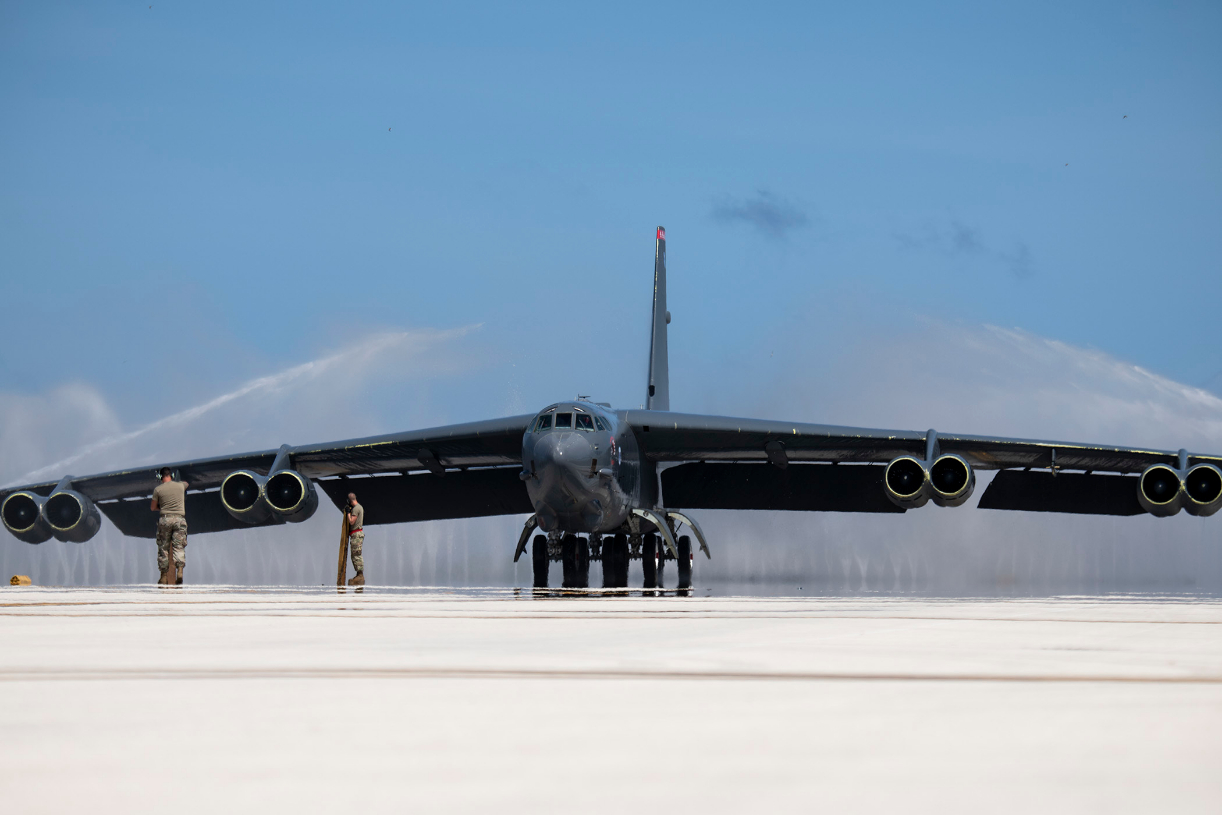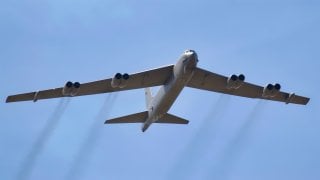U.S. Air Force B-52 Bombers Just Flew Right to Russia's Doorstep
Two U.S. Air Force B-52 Stratofortress bombers from the 5th Bomb Wing, deployed to RAF Fairford in the UK, conducted an aerial sortie over the Baltic Sea, encircling the Russian exclave of Kaliningrad.
Summary: Two U.S. Air Force B-52 Stratofortress bombers from the 5th Bomb Wing, deployed to RAF Fairford in the UK, conducted an aerial sortie over the Baltic Sea, encircling the Russian exclave of Kaliningrad.

-This maneuver, part of Bomber Task Force Europe 24-3, was a clear message to Moscow amid heightened tensions following Russia's invasion of Ukraine.
-Kaliningrad, historically known as Krolewiec and Koeningsberg, is strategically important to Russia for its ice-free port and potential nuclear capabilities.
-The exclave, ceded from Germany to the Soviet Union post-WWII, also has a contentious history due to the Soviet-ordered Katyn massacre.
U.S. B-52 Bombers Send Strong Message to Russia with Baltic Sortie
A pair of United States Air Force B-52 Stratofortress bombers deployed to Royal Air Force (RAF) Fairford in the UK took part in an aerial sortie – flying over the Baltic Sea and then literally around the Russian exclave of Kaliningrad. The deployment of the bombers over the Russian-controlled territory – the home of the headquarters of the Russian Navy's Baltic Fleet – was clearly meant to send a strong message to Moscow.
The two B-52s are from the Air Force Global Strike Command's 5th Bomb Wing, based out of Minot Air Force Base (AFB), North Dakota, and had been deployed to the UK as part of a four-aircraft Bomber Task Force (BTF) mission. During BTF Europe 24-3, the long-range strategic bombers, which are capable of carrying nuclear weapons, have been training with allied and partner aircraft throughout Europe. The United States Air Force has increased the BTF deployments following Russia's unprovoked invasion of Ukraine in February 2022.
According to open source public flight track data, the bombers reported department from RAF Fairford, flew across the North Sea, the Netherlands, and Germany, and then across the Baltic Sea, before flying over NATO and EU member states Lithuania and Poland – literally flying a circle over Kaliningrad as the bombers then returned to the UK.
From Krolewice to Koenigsberg to Kaliningrad
This week's flight of the B-52s comes just weeks after Poland began to revert to the traditional Polish name for the city of Kaliningrad, which was never historically Russian territory. For centuries, the coastal city and surrounding land on the Baltic Sea was known as Krolewiec, but under Prussian/German control it became known as Koeningsberg.
It was ceded from Germany to the Soviet Union following the end of the Second World War – and named to honor Mikhail Kalinin, a leader of the Bolshevik Revolution. The German and Polish populations were forcibly evicted from the territory and ethnic Russians moved in, despite never previously living there in large numbers. At the time, Moscow also controlled the now three independent Baltic States of Estonia, Latvia, and Lithuania and had direct land access to Kaliningrad.

Despite only having access by air and sea today, the exclave is strategically important for the Kremlin as it is home to Russia's only ice-free port on the Baltic Sea. Though Moscow has never confirmed it, Kaliningrad is also believed to host Iskander missiles armed with nuclear warheads.
Moreover, the name also remains contentious as Mikhail Kalinin was one of the Soviet officials who ordered the execution of more than 21,000 Polish prisoners after the Soviet Red Army invaded Poland at the start of World War II. Known as the Katyn massacre, it was carried out to deprive the future Polish military of a large portion of capable officers and intelligentsia.
Soviet dictator Joseph Stalin denied that the Soviet Union was responsible, pinning the slaughter on the Nazis. While the Soviet government officially accepted blame for the Katyn Massacre at the end of the Cold War, many in Moscow still maintain that the Red Army played no part in the execution of the Polish POWs.
Author Experience and Expertise: Peter Suciu
Peter Suciu is a Michigan-based writer. He has contributed to more than four dozen magazines, newspapers, and websites with over 3,200 published pieces over a twenty-year career in journalism. He regularly writes about military hardware, firearms history, cybersecurity, politics, and international affairs. Peter is also a Contributing Writer for Forbes and Clearance Jobs. You can follow him on Twitter: @PeterSuciu.
You can email the author: [email protected].
All images are Creative Commons.


